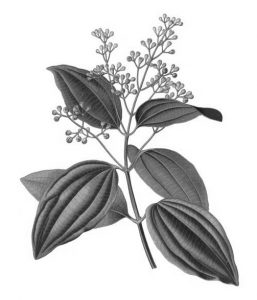 by Forrest Cokely
by Forrest Cokely
Plants and their derivatives have been utilized throughout history to cure illness or relieve physical symptoms. In ancient times each culture and society had a variety of different understandings with regard to plants and their medicinal properties. That knowledge naturally evolved from shamen, tribal leaders, witch doctors, monks, philosophers and other prominent people in society as it moved and merged from one group to another through trade and legend. As far back as 6000 BC the Chinese were known to have used concoctions of medicinal herbs and barks. Egyptians famously infused these medicinal herbs into wines and other consumables to preserve potency while making them more accessible and enjoyable to imbibe. Who hasn’t heard the expression “A spoonful of sugar to make the medicine go down”? The Greeks had schools of thought that taught how each medicinal herb worked with other specific barks and seeds to calm or cure a variety of ailments ranging from menstrual cramps to arthritis pain, and across the spectrum of health maladies. These remedies spread to regions, cultures and societies the world over and as the international market expanded so did trade and the opportunity to master recipes for health tonics or bitters spread with it.
These recipes spread naturally, intuitively. Some are fixed in specific use and some are more family improvements based on local recipes. There is a great story of a monk named Brother Angelico Fernet, from the Burgundy region of France, who traveled around Hungary and the Alps sharing his health tonic that was exceptionally beneficial in treating cholera and malaria. According to the story, which has several versions, the monk met Maria Scalia, wife of Bernadino Branca, who was renowned for her benevolence and herself a master herbalist and self-taught doctor. Maria Scalia’s husband began commercializing “Fernet Branca” in around 1845, using the style and medicinal herbs available in Milan, and that brand has since become the best-selling fernet in the world.
Another great story is that of Monsieur Henri VALLET, a conscripted émigré to Mexico from France during the reign of Maximilian. Maximilian’s reign was poorly conceived and ill-fated, and the monarch was deposed shortly after his audacious ascent as Emperor of Mexico. Henri VALLET, like many other French immigrants from that time, decided to stay in Mexico as his adopted homeland. Continuing an early vocation of a distiller and apothecary, he sourced the botanicals to produce the liqueurs and elixirs reminiscent of his homeland, as he was from the same region of France that Brother Angelico Fernet. By the 1880s Henri VALLET had emerged as Mexico City’s preeminent distiller, specializing in herbal tonics including two that are today still crafted according to his specific recipes and formulation guidelines.. Fernet VALLET and Amargo-Angostura VALLET.
Fernet Vallet is made from a maceration of aromatic plants, roots and spices that include cinnamon, clove, Quassia bark, gentian root and cardamom pods. Deliciously intense and herbal, it is a woodsy digestive that enjoys popularity all over Mexico in the preparation of cocktails and as a Carminative.
Amargo-Angostura Vallet is a bitter liqueur (Amargo is Spanish for Bitter) that actually uses the eponymous Angostura bark in its formulation. A maceration of cherry fruits, cloves and other roots and spices meld with the Angostura bark’s dry bitterness. Herbal notes of bittersweet dark chocolate and fruit balance an earthly richness to create this world-class elixir.

